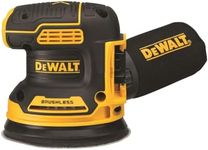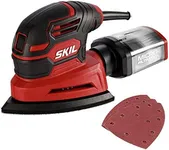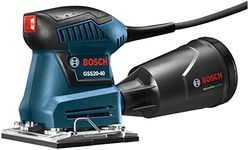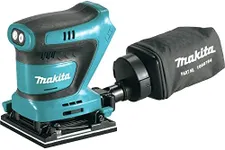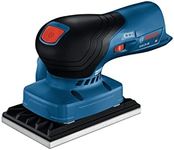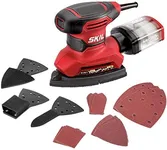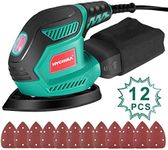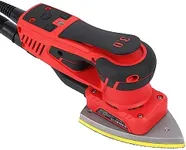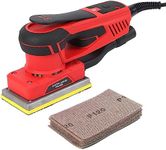Buying Guide for the Best Detail Sanders
When choosing a detail sander, it's important to consider the specific tasks you plan to undertake. Detail sanders are designed for precision work, such as sanding in tight corners, intricate patterns, and small surfaces. Understanding the key specifications will help you select a sander that meets your needs and ensures efficient and effective results.PowerPower is measured in watts or amps and indicates the strength of the sander's motor. Higher power means the sander can handle tougher materials and more demanding tasks. For light, detailed work, a lower power sander (around 0.5 to 1 amp) is usually sufficient. For more intensive tasks or harder materials, look for a sander with higher power (1 to 2 amps). Choose based on the type of materials and the intensity of the work you plan to do.
SpeedSpeed is measured in oscillations per minute (OPM) and determines how fast the sanding pad moves. Variable speed settings allow you to adjust the speed for different tasks. Lower speeds (around 10,000 OPM) are suitable for delicate work and fine finishes, while higher speeds (up to 20,000 OPM) are better for removing material quickly. Consider a sander with variable speed control if you need versatility for different projects.
Pad Size and ShapeThe size and shape of the sanding pad affect the sander's ability to reach tight spaces and perform detailed work. Smaller pads (around 1 to 2 inches) are ideal for intricate areas and fine details, while larger pads (3 to 4 inches) cover more surface area and are better for broader tasks. Triangular or teardrop-shaped pads are particularly useful for getting into corners and edges. Choose based on the specific areas you need to sand.
Dust CollectionDust collection systems help keep your workspace clean and reduce airborne particles. Some sanders come with built-in dust collection bags or can be connected to a vacuum. Effective dust collection is important for maintaining a clean work environment and protecting your health. Look for a sander with a good dust collection system if you plan to use it frequently or in enclosed spaces.
Weight and ErgonomicsThe weight and design of the sander affect how comfortable it is to use, especially for extended periods. Lighter sanders (around 2 to 3 pounds) are easier to handle and reduce fatigue, while heavier models may offer more stability. Ergonomic designs with comfortable grips and easy-to-reach controls enhance usability. Consider how long you'll be using the sander and choose one that feels comfortable and balanced in your hand.
Accessories and AttachmentsSome detail sanders come with additional accessories and attachments, such as different sanding pads, detail tips, or carrying cases. These can enhance the versatility and convenience of the sander. If you have specific needs or plan to tackle a variety of projects, look for a sander that includes useful accessories. This can save you time and money in the long run.
